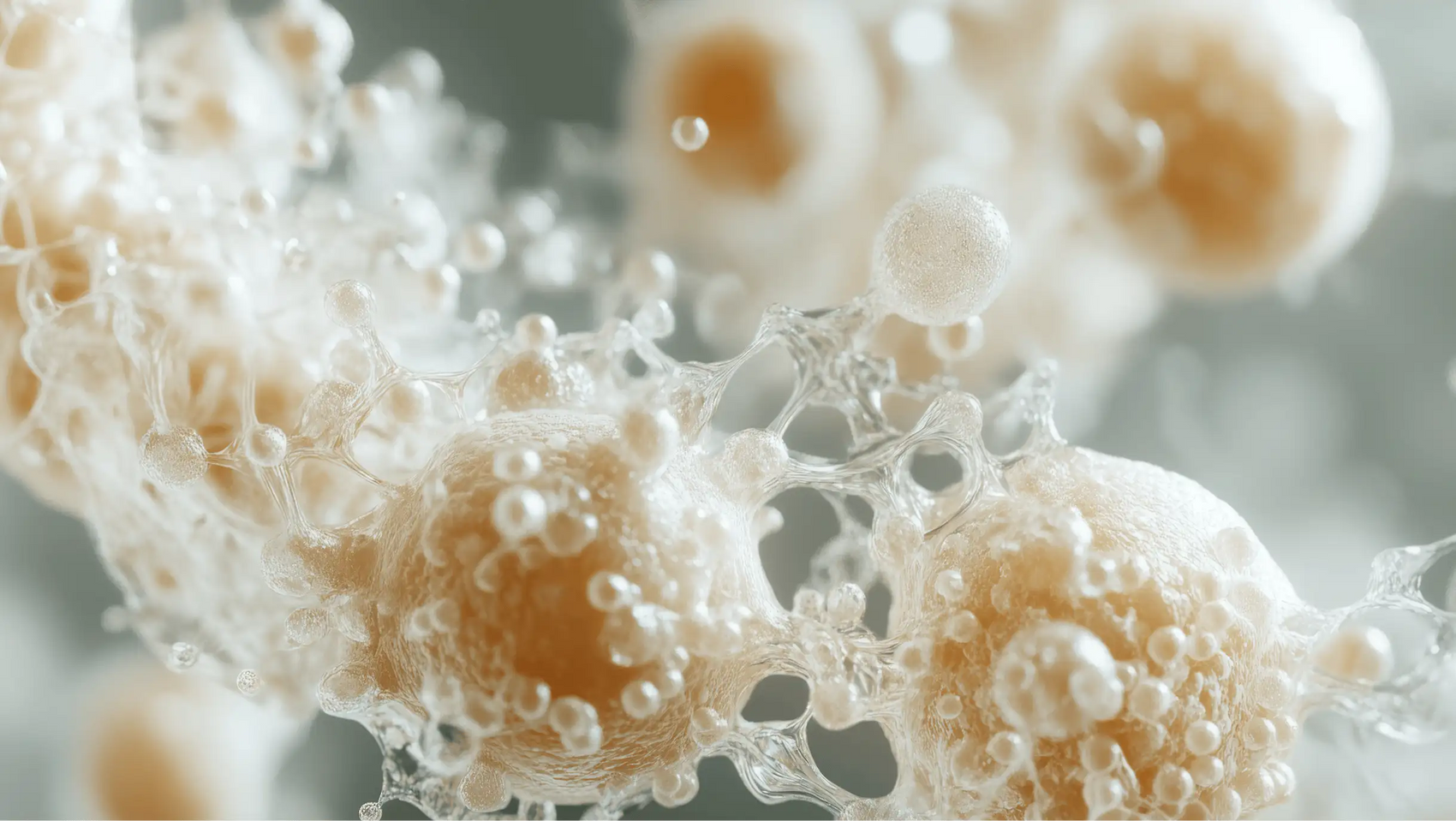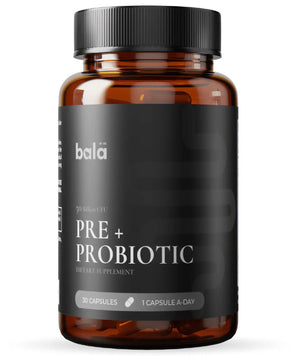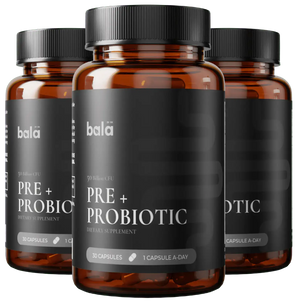Table of Contents
Introduction
Did you know that approximately 75% of women will experience a vaginal yeast infection at some point in their lives? This staggering statistic highlights the importance of understanding how to prevent and manage these infections effectively. As we navigate the complexities of gut and vaginal health, many of us find ourselves asking: Are prebiotics good for yeast infections?
At Bala Health, we believe that education is the first step in taking charge of our health. With a commitment to transparency and science-backed solutions, we aim to help you understand the role prebiotics play in maintaining a healthy balance in your body. This blog post will delve into the relationship between prebiotics, probiotics, and yeast infections, exploring the mechanisms at play and offering practical insights to support your journey toward optimal health.
In this article, we will cover:
- What prebiotics are and how they function in the body
- The connection between prebiotics, probiotics, and yeast infections
- Dietary choices that can help prevent yeast infections
- The importance of maintaining a healthy vaginal microbiome
- How Bala Health’s commitment to clean, effective probiotics can support your wellness journey
Are you tired of the confusion and skepticism surrounding gut and vaginal health? Join us as we explore the evidence behind prebiotics and their potential benefits in addressing yeast infections.
What Are Prebiotics?
Prebiotics are non-digestible fibers found in certain foods that act as fuel for beneficial bacteria in our gut. Unlike probiotics, which are live microorganisms, prebiotics help stimulate the growth of these good bacteria, contributing to a balanced microbiome. Think of prebiotics as the fertilizer that nourishes the good bacteria in your garden.
Key Characteristics of Prebiotics
- Non-Digestible: Prebiotics pass through the digestive system without being broken down, allowing them to reach the colon intact.
- Selective Fermentation: They are selectively fermented by beneficial gut bacteria, promoting their growth and activity.
- Health Benefits: Prebiotics have been shown to support digestive health, enhance mineral absorption, and improve immune function.
Common Sources of Prebiotics
Prebiotics can be found in a variety of foods, including:
- Fruits: Bananas, apples, berries
- Vegetables: Garlic, onions, leeks, asparagus
- Whole Grains: Oats, barley, wheat
- Legumes: Beans, lentils, chickpeas
- Nuts and Seeds: Almonds, flaxseeds
Incorporating these foods into our diet can help nourish our gut microbiome. However, achieving the right balance of prebiotics and probiotics can sometimes be challenging, which is where supplementation may come into play.
The Connection Between Prebiotics, Probiotics, and Yeast Infections
Understanding the relationship between prebiotics, probiotics, and yeast infections requires a look at the vaginal microbiome. Much like our gut, the vagina is home to a complex community of microorganisms that play a crucial role in maintaining health. A balanced microbiome can help prevent infections, including yeast infections caused by an overgrowth of Candida.
How Probiotics Support Vaginal Health
Probiotics are live microorganisms, often referred to as "good" bacteria, that contribute to a healthy balance in the body. In the context of vaginal health, probiotics, particularly Lactobacillus species, play a vital role in maintaining the acidity of the vaginal environment, which inhibits the growth of harmful bacteria and yeast.
- pH Balance: Probiotics help maintain a slightly acidic pH (around 4.5), which is unfavorable for the overgrowth of Candida.
- Competitive Inhibition: Probiotics can outcompete harmful microorganisms for resources, helping to restore balance.
- Immune Support: They interact with immune cells in the vaginal mucosa, enhancing the body's natural defense mechanisms.
The Role of Prebiotics in Yeast Infection Prevention
While probiotics introduce beneficial bacteria into the vagina, prebiotics provide the necessary nourishment for these bacteria to thrive. By supporting the growth of good bacteria, prebiotics can help maintain a healthy vaginal microbiome, which in turn can reduce the risk of yeast infections.
- Nourishing Beneficial Bacteria: By feeding good bacteria, prebiotics help them flourish, creating a more competitive environment against harmful pathogens.
- Enhancing Probiotic Efficacy: When taken together, prebiotics and probiotics (a combination known as synbiotics) can enhance the effectiveness of each other.
- Promoting Microbial Diversity: A diverse microbiome is crucial for preventing dysbiosis, which can lead to infections.
Dietary Choices for Preventing Yeast Infections
In addition to incorporating prebiotics and probiotics into our diet, certain lifestyle and dietary choices can further support vaginal health and potentially reduce the risk of yeast infections.
Foods to Embrace
- Fermented Foods: Foods like yogurt, kefir, sauerkraut, and kimchi contain natural probiotics that can help balance the vaginal microbiome.
- High-Fiber Foods: Including plenty of fruits, vegetables, and whole grains in our diet provides prebiotics that nourish beneficial bacteria.
- Low-Sugar Options: Yeast thrives on sugar, so reducing sugar intake can help limit Candida overgrowth.
Foods to Avoid
- Refined Sugars: Limit consumption of sugary snacks, desserts, and beverages, which can promote yeast growth.
- Simple Carbohydrates: Foods like white bread and pasta can quickly convert to sugar in the body and may contribute to an imbalance.
- Processed Foods: Highly processed foods often lack fiber and beneficial nutrients that support overall health.
The Importance of Maintaining a Healthy Vaginal Microbiome
A healthy vaginal microbiome is essential for preventing infections and ensuring overall well-being. When the balance of good and bad bacteria is disrupted, it can lead to conditions such as bacterial vaginosis and yeast infections.
Signs of an Imbalanced Microbiome
- Unusual Discharge: Changes in color, consistency, or odor.
- Itching or Irritation: Discomfort in the vaginal area.
- Recurring Infections: Frequent occurrences of yeast infections or bacterial vaginosis.
Strategies for Maintaining Balance
- Good Hygiene Practices: Regularly cleansing the vaginal area with mild, unscented soap and avoiding douches or perfumed products can help maintain balance.
- Cotton Underwear: Wearing breathable cotton underwear helps keep the area dry and reduces moisture that can promote yeast growth.
- Regular Probiotic Intake: Incorporating a high-quality probiotic supplement, like our clinically-backed Bala Health Probiotic, can support vaginal health and balance.
Our Commitment to Gut and Vaginal Health
At Bala Health, we are dedicated to simplifying gut health with clean, science-backed probiotics that actually work. Our flagship probiotic is designed to support a healthy microbiome and ease occasional discomfort.
Why Choose Bala Health Probiotics?
- Science-First Approach: We use clinically validated strains and doses backed by real research.
- Transparency: Our clean-label approach means no hidden ingredients—just what works.
- Simplicity: Health shouldn’t be complicated; our messaging is straightforward and easy to understand.
- Empowerment: We educate our customers to make informed decisions about their health.
Ready to experience the benefits of our probiotics for yourself? Start your journey to better gut health today!
Conclusion
In conclusion, prebiotics play a vital role in supporting our health, particularly in the context of preventing yeast infections. By nourishing beneficial bacteria and promoting a balanced microbiome, prebiotics can contribute to a healthier vaginal environment. Alongside a diet rich in prebiotics and probiotics, we can take proactive steps to maintain our well-being.
If you’re looking to enhance your gut and vaginal health, we encourage you to take our 3-minute Weight-Loss Quiz for personalized insights. And don’t forget to explore our clinically-backed probiotic that can support you on your wellness journey!
FAQ
Q: Can prebiotics help with yeast infections? A: Yes, prebiotics can support the growth of beneficial bacteria, which may help maintain a healthy balance in the vaginal microbiome and reduce the risk of yeast infections.
Q: How do I know if I have a yeast infection? A: Symptoms of a yeast infection may include itching, burning, and unusual discharge. If you suspect you have an infection, it's essential to consult with a healthcare professional for proper diagnosis and treatment.
Q: What is the difference between prebiotics and probiotics? A: Prebiotics are non-digestible fibers that feed beneficial bacteria, while probiotics are live microorganisms that contribute to a healthy microbiome.
Q: How can I maintain a healthy vaginal microbiome? A: Maintaining a healthy vaginal microbiome involves good hygiene practices, a balanced diet rich in prebiotics and probiotics, and lifestyle choices that support overall health.
Q: What should I do if I experience recurring yeast infections? A: If you experience frequent yeast infections, consider consulting with a healthcare professional to evaluate your diet, lifestyle, and possible underlying causes.







